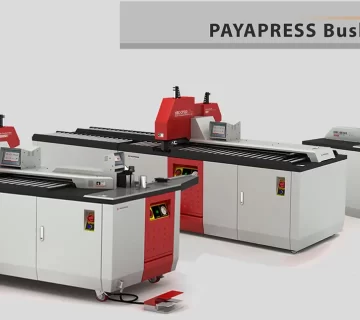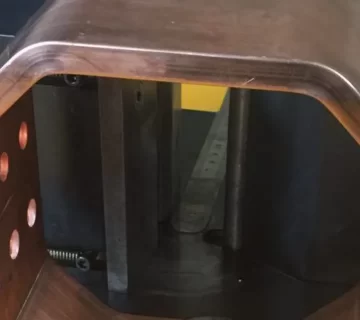Busbar trunking systems are a method of power distribution using formed aluminum or copper bus bars made by a busbar bending machine to distribute the power around a building. Busbar systems were initially developed to provide an alternative to the more traditional methods of power distribution and to resolve many of the longstanding issues with cables.
The advantage of the busbar over the cable is summarized in the following items:
1- Easier branching
2- More strength than cable
3- Flexibility
4- Better electrical current conduction
5- Lower Lifetime Cost
Easier branching
- By creating a hole on the bus bar with the busbar punching machine and with the help of bolts and nuts, you can easily branch from the busbar and there is no need for terminals, etc.
More strength than cable
- Busbars have much better resistance than cables, and this shows especially in short circuit testing. Within the casing of the busbar, there is a minimum distance between each conductor which reduces the induction of resistance. Busbar also has lower density levels due to a thin flat tire that helps in optimal distribution of density of current, and reduces resistance. Due to this, the voltage loss from the busbar is much lower than it would be for cables.
Flexibility
- Busbar is able to fit in any structure and has a more modular design than cables. They can be bent, punched and cut by the help of bus bar machine, Busbars can be relocated without needing to spend large amounts of money, and they can be modified to fit into any additional space. Once cables are installed and in place, the possibility of moving, changing, reconfiguring and expanding these systems can be incredibly expensive and disruptive for the service. Busbar can be added to, reconfigured or replaced when required with minimal interruption for both the client and the service they provide.
Better electrical current conduction
- Due to the fact that the electric current passes through the surface of the conductor, in the same cross-sectional area in the cable and the bus bar, the circumference of the busbar is more than the cable, and therefore the electric conductivity of the busbar is better than the cable.
Lower Lifetime Cost
- It is falsely believed that busbar is a higher cost alternative to cable. In reality, the easy installation of busbar and its configurable system ensure that it is very competitively priced due decreased assembly time and material handling costs. In fact, over the lifetime of a busbar it costs much less than cables as the system is much more efficient and virtually maintenance free. Busbar trunking systems bring energy economically into any building. The power distribution system can be precisely planned from the total load rating and the type and number of loads. This ensures that accurate costs are given at an early stage in the project.




No comment